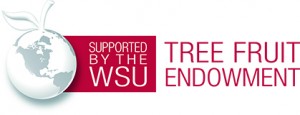Written by Sonia Hall, Center for Sustaining Agriculture and Natural Resources, January 10, 2025
Please complete this voluntary, anonymous survey to help us understand how heat and cold are affecting your apple and pear orchards and the strategies you use to minimize the resulting losses. Your responses will contribute to SPARC, a USDA-funded research project to understand how modern apple or pear cultivars respond to heat and cold stress, the genetic controls of these responses, and the effectiveness of potential mitigation strategies. Together we can develop tools to assess the risk of losses to extreme temperatures and to mitigate these losses, now and into the future.
Take the survey in English
Complete la encuesta en español
To learn more about SPARC – Strengthening Pear and Apple Resilience to Climate Change, read the September 2024 WSU Insider article.
If you have questions on the survey, please contact:
Lee Kalcsits, WSU Tree Fruit Research and Extension Center, lee.kalcsits@wsu.edu, 509-293-8764
Sonia Hall, WSU Center for Sustaining Agriculture and Natural Resources, sonia.hall@wsu.edu, 509-293-8797

Contact
Sonia Hall
Washington State University, Center for Sustaining Agriculture and Natural Resources
sonia.hall@wsu.edu
509-293-8797
Funding and acknowledgements
This work is supported by the USDA National Institute of Food and Agriculture – Specialty Crop Research Initiative project “Preparing U.S. Pome Fruit Production for Extreme Temperatures in a Changing Climate” (2024-51181-43289; Accession #1032988).
Fruit Matters articles may only be republished with prior author permission © Washington State University. Reprint articles with permission must include: Originally published by Washington State Tree Fruit Extension Fruit Matters at treefruit.wsu.edu and a link to the original article.
